ioSafe Jolts Thunderbolt SSD RAID With 1,000,000 Volts
Easily the most hair-raising demonstration in Las Vegas at CES 2012.

You may remember from previous CES events from years past that ioSafe makes "disaster proof" storage hardware and it likes to set up fairly over-the-top demonstrations on its products.
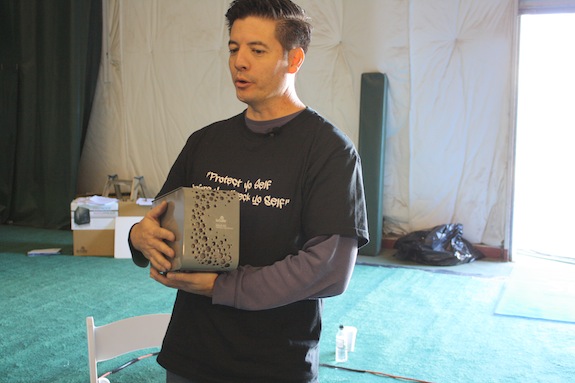
At CES 2012, ioSafe was showing off the $299 Solo G3 external hard drive that is both waterproof and fireproof. If it happens to find itself near flames, it will be able to handle 1550°F or 843°C for 30 minutes. Should the Solo G3 be dunked in water, it's rated to 10ft of submersion for 72 hours. In any case, ioSafe includes $1000 worth of data recovery service.
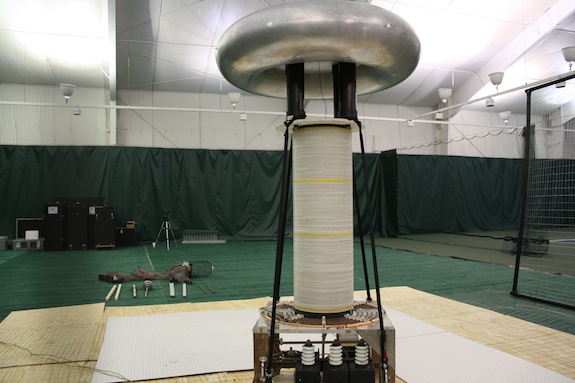
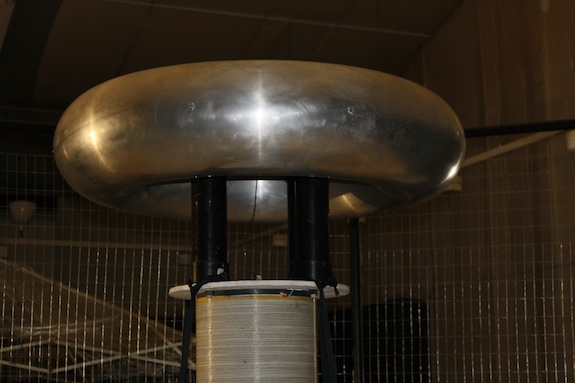
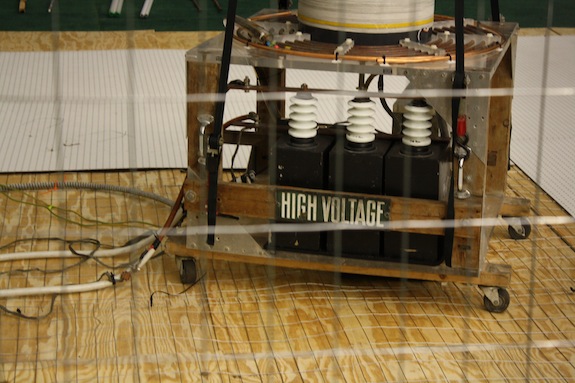
For its CES 2012 demonstration, ioSafe once again held it away from the convention center. This year they enlisted the help of Dr. Megavolt (Austin Richards), who works with Tesla coils to create great spectacles using lots of high voltage electricity.
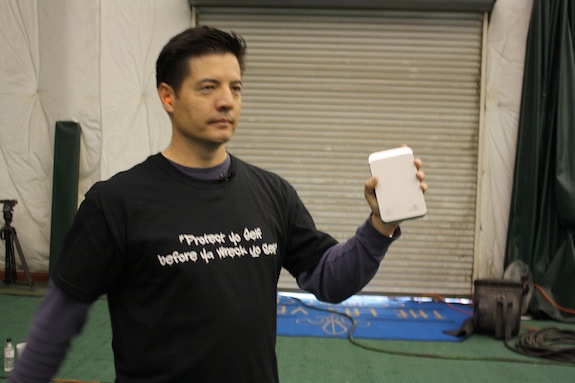
CEO Robb Moore brandished a hard drive enclosure that looked very similar to the one that we sent bullets at last year, but this one was packing a dual SSD in RAID.
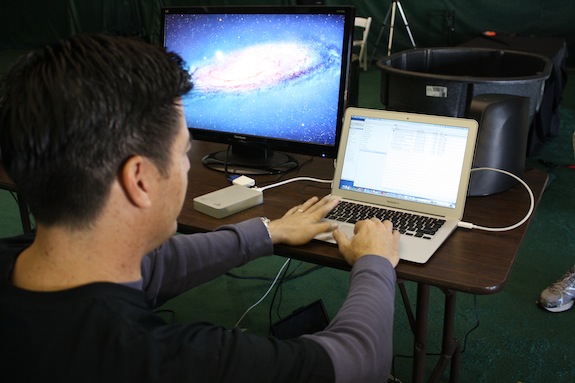
Prior to the shocking demo, Robb loaded up the SSDs in front of our eyes with data, along with a custom text file of our choice. Then it was time for Dr. Megavolt to get to work.
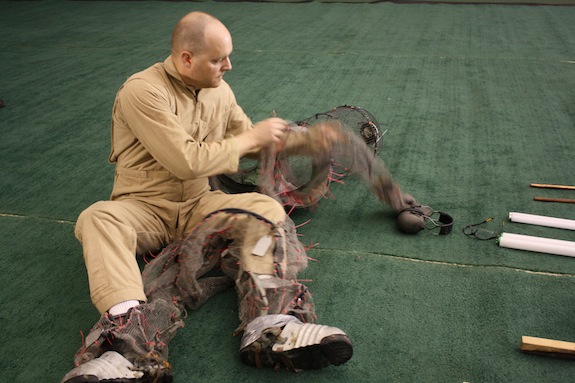
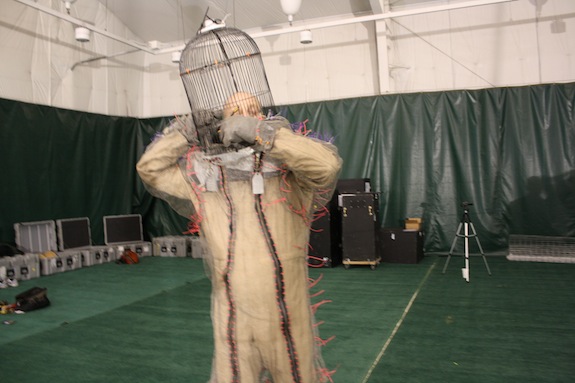
After putting a million volts through the drive, the ioSafe team plugged it right back into the MacBook Air and all the data was completely intact. We heard that in some cases the extreme electricity would fry the RAID controller, but then a quick replacement of the controller (rather than the drives) would be enough to make the data accessible again.
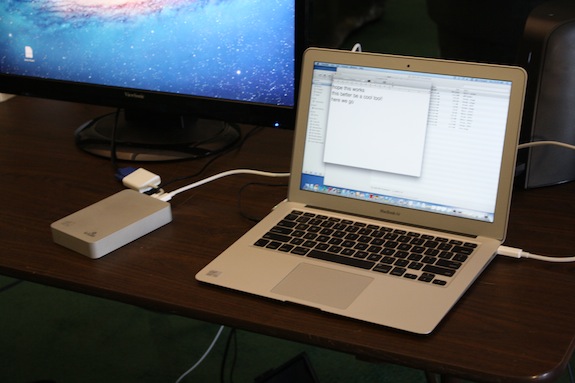
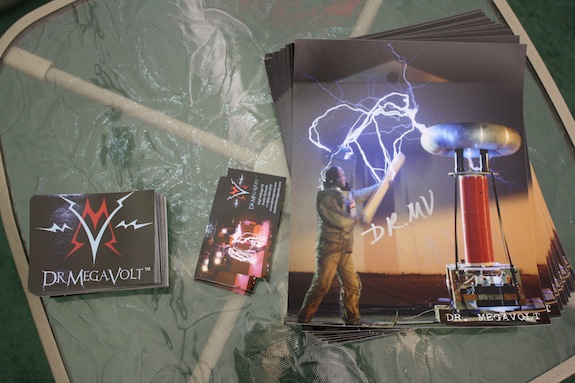
Special thanks to Chris Grundy of Cool Tools for playing the stand-in host at our demo.
Stay On the Cutting Edge: Get the Tom's Hardware Newsletter
Get Tom's Hardware's best news and in-depth reviews, straight to your inbox.
-
Xatos Cool video, but as for the SSD, the charge via perception is clearly behind the SSD (his suit/hand). Whatever, doesn't really matter anyway.Reply -
nebun ok the volt rating is not what damages electronics it's the AMPS....if this thing is so good at protecting data then why is it that insurance for your data is only $1000....i guess it's not that safe after all....such a stupid gimmickReply -
freggo Remember science class ?Reply
It's not the Volts that kill you, it's the Amps !
Goes to show you, the Italians are cool but the French will do you in :-)
-
The power supply also needs high enough voltage potential to cause breakdown of skin into the conductive region so that electrons (current) will flow. So you are half way correct. The voltage potential needs to be about 50 volts on dry skin AND the power supply needs to be able to provide the current needed to stop the heart.Reply
-
Just so everybody gets it. Statics electric discharge has almost no current and a lot of electricity potential. That fries electronic if they are hit with it. This is why workers in electronic manufacturing are wearing heels and wrist dichage device and they hookup the wrist to ground when they are sitting at their work station. Because in that case, the heels dischage device isn't working (not enough pressure on the ground). The wrist band also contains a high ohmage resistor, so workers don't get killed if they touch a place where current is high. Volt = Resistance * I (Amps), the higher the resistance, the lower the current is. There's also the lab caot, which contains a carbon fiber strand that forms a faraday cage to prevent static electricity of coming out your clothes.Reply
So yeah, that demo is valid and the drive is tough.




